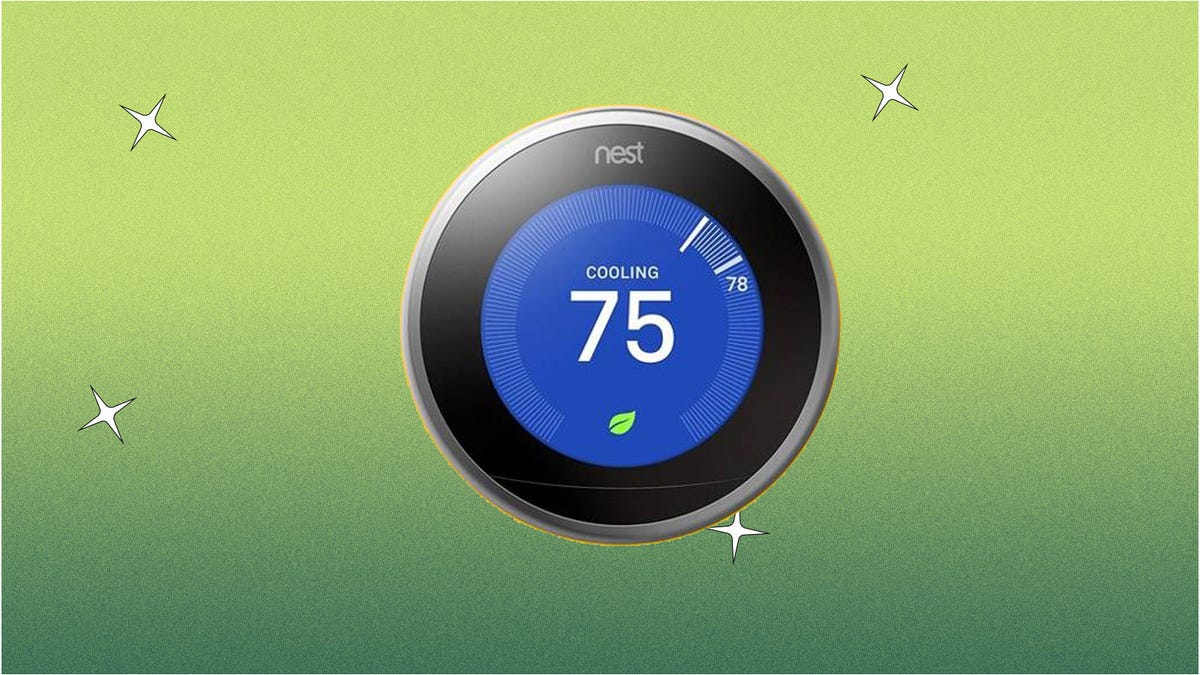Heating Remains the Top Use of Home Energy
Homes in colder states consume more energy than those in warmer states.

You can use a smart thermostat like Google Nest to help control your heating bills.
Heating continues to be the top use of energy consumption in homes across the US, according to the latest Residential Energy Consumption Survey released by the Energy Information Administration.
The study, released June 15, contains home energy use stats from 2020. For the first time, the estimates include comparisons between households across all 50 states and the District of Columbia. "We now have the opportunity to compare household energy uses from state to state," EIA Administrator Joe DeCarolis said in a statement.
Energy consumption and expenditures varied across the country depending on the climate and energy source used, the survey notes. For example, homes in New Hampshire, one of the coldest states, spent an annual average of $981 on heating in 2020, with fuel oil the most common primary fuel source, used by 40% of households. By comparison, in the much-warmer state of Louisiana, households spent just $244 on average to heat their homes annually, and 62% used electricity to heat their homes, the primary heating source for households there. Other fuel sources reported were natural gas and propane.
In addition to heating, the study also looked at air conditioning usage. Nearly 90% of US households used some form of air conditioning in 2020. Air conditioning accounted for 9% of total site energy across all households but varied widely across states.
Air conditioning accounted for 28% of total site energy usage in Florida, but just 2% in Maine. And the average Arizonan averaged $658 annually on air conditioning in 2020, while Alaskans spent just $55.
In Delaware, 97% of respondents used air conditioning, with 85% of them utilizing central air. In chillier Alaska, only 7% of respondents used air conditioning, with 46% of that number relying on ceiling fans for cooling.
Households spent an average of $91 on lighting in 2020, an average of 654 kilowatt-hours. That compares with $147 and 1,105 kWh in the 2015 survey. And use of light-emitting diode, or LED, light bulbs is way up. Only 4% reported using LEDs for all or most of their indoor lighting in 2015, compared with 47% in 2020.
Electricity consumption for refrigeration varied by state. Washington, DC households consumed an average of 610 kWh for refrigeration, and only 15% reported having a second refrigerator. On the higher end, Georgia households consumed an average of 928 kWh for refrigeration, and 37% had a second fridge.
Households that were energy insecure were billed more for energy than other households, the survey reported. The US average for energy cost is $1.04 per square foot, but energy-insecure households paid an average of $1.24 as opposed to 98 cents per square foot in households that didn't experience energy insecurity.
"We do not try to draw conclusions as to why energy-insecure families pay more for energy, but other groups that have researched this topic usually conclude that there is a correlation between inefficient housing stock and inefficient equipment and lower income," said Bill McNary, survey statistician.
This was the 15th iteration of the study, which was first conducted in 1978. It collected data from nearly 18,500 households in housing units statistically selected to represent the 123.5 million housing units that are occupied as primary residences.
How you can save money on heating and AC
If you're looking for an energy-efficient alternative to traditional air conditioners in spring and summer, and furnaces in fall and winter, you might want to consider investing in a heat pump. It's a cooling and heating system that can help you save money and also minimize your environmental footprint amid the climate crisis.
You can also install a smart thermostat to help lower your bills by having greater control over when heat and air conditioning are being used -- check out CNET's list of the best smart thermostats, and all the best smart home devices of 2023.

